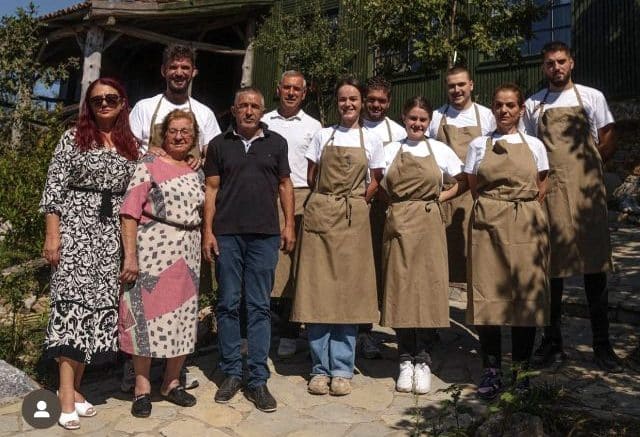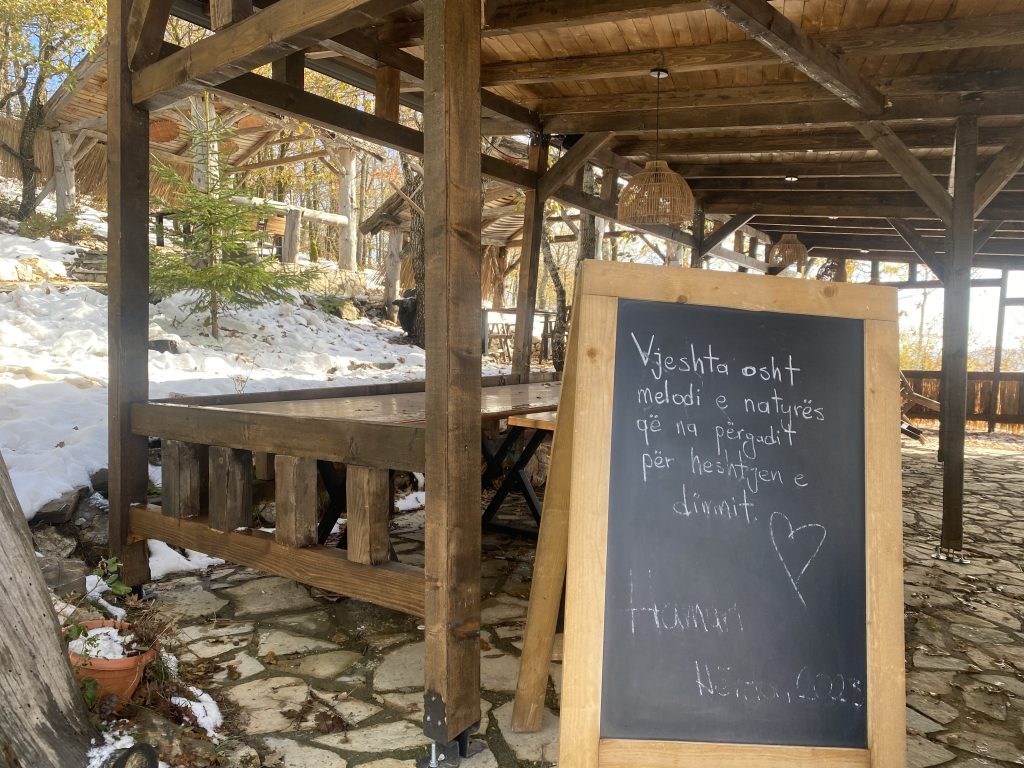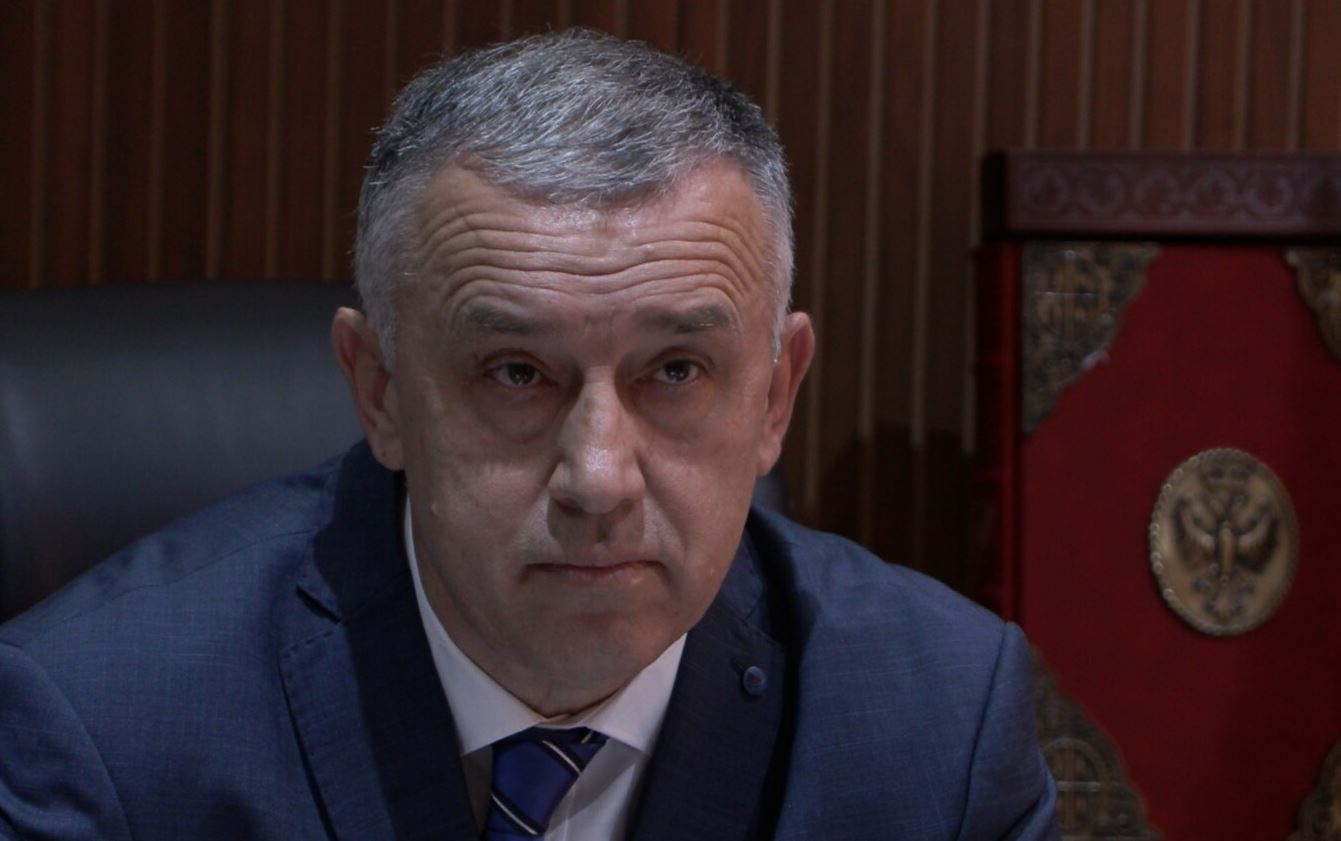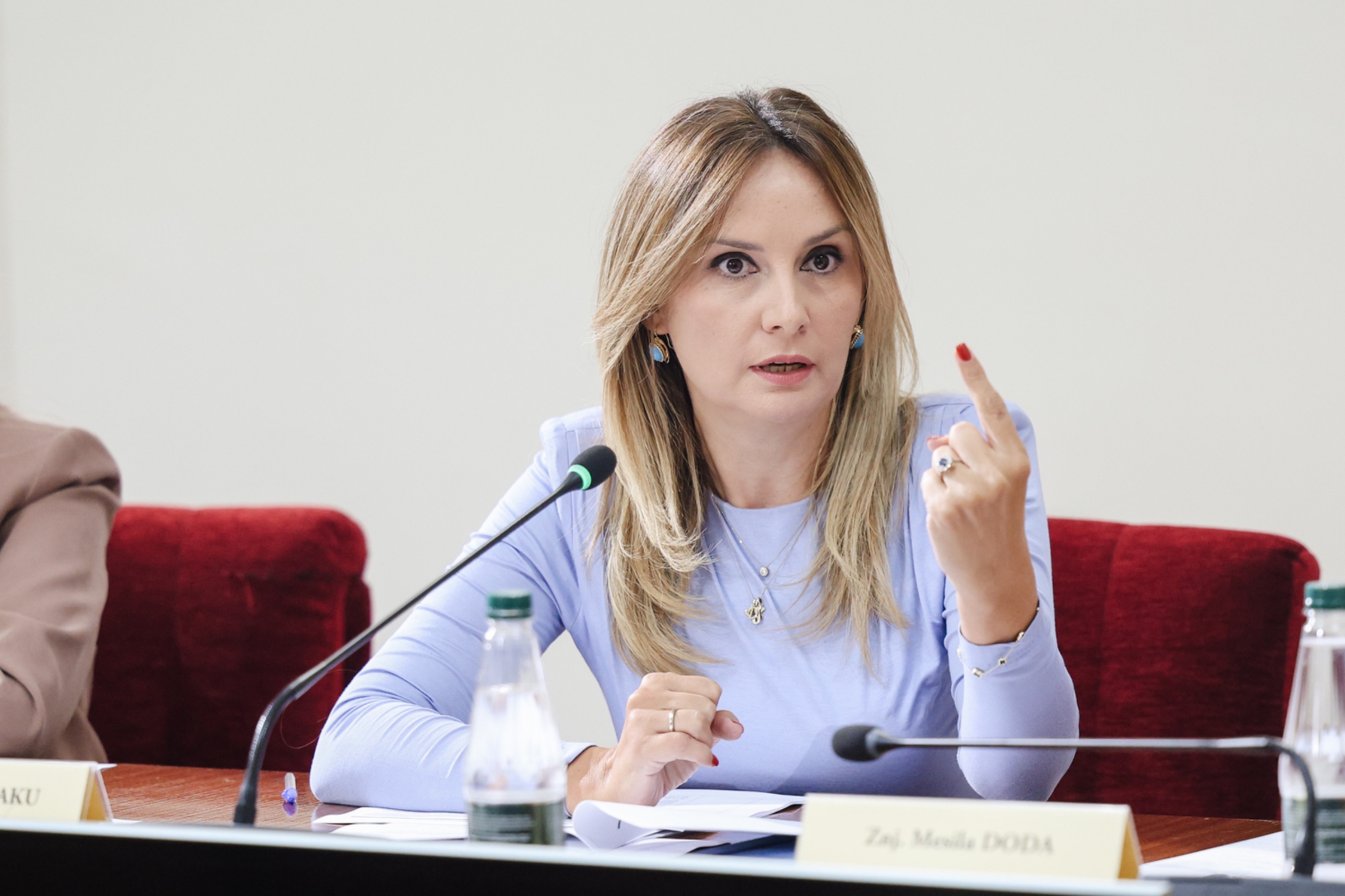In Kosovo, agritourism is on the rise, with people abandoning urban stress to invest in village revitalisation and establish a sustainable lifestyle away from the city.
Adrian Berisha once felt shackled by the grind of urban life in Prishtina, which he likened to modern-day slavery. The ceaseless battle for affordability on stepping out of his door had worn him down.
Seeking liberation from this urban monotony, the 30-year-old embarked on a transformative journey this year, now spending his days immersed in the tranquillity of the village of Butovc.
At the top of Butovc, nestled amid trees, is Hamari, a distinctive restaurant managed by Adrian. Paradoxically situated in a village caught between abandonment and revitalization, Hamari is a haven for those seeking refuge from urban chaos, offering an authentic “farm-to-table” dining experience.
Adrian intimately understands the nuances of city life. Transitioning from a DJ to an assemblyman and later to cultural director of the municipality of Prishtina, he redirected his focus this year toward an agritourism venture. He is not just a co-owner but the driving force behind Hamari.
“When I come to Butovc, I experience a different life from what we do every day. The calm and everything else. I think, why didn’t I come sooner?” Adrian asks.
While the trend of rural exodus has affected Kosovo and the wider Western Balkans, the growing field of agritourism in Kosovo’s fertile lands is slowly turning this narrative around, sparking a rural renaissance, say those who have returned to start a business, even if it is still in its nascent stages.
Based on a study by the researcher Ruzhdi Matoshi, a professor at the University for Business and Technology in Kosovo, the promotion and support for the development of agritourism aim to encourage the development of rural areas, but not in the way in which urban construction has developed cities, but mainly to preserve the environment.
Back to the land
Adrian spent his childhood in the village of Shipashnica near the eastern town of Kamenica. Although he has not dealt with agritourism before, he sees it as the epicentre of a potential revival of villages through innovative agricultural methods.
In 2004, Florim Gashi, one of Adrian’s relatives, bought land in Butovc, with a dream in 2019 to convert a small cottage into a restaurant. The pandemic forced its closure a year later. In 2022, with Adrian’s vision, Hamari reopened, as an agritourism landmark.
While he was local director of culture, Berisha expressed an interest in decentralization, wanting a cultural institution to exist in the village to keep people there.
“One day I went by bike to Gollaku, Grashtica, Mramor and the Llukar area, (Prishtina villages) around 50 kilometres, taking about 10 hours. I saw the villages there and it impressed me a lot. I saw the cultural centre in Llukar, and they were asking for a non-governmental organisation there, saying: ‘Come on, let’s do something here because everything is concentrated only in the city,’” he recalled.
Adrian and his extended family of around 12 members have now resuscitated Butovc through Hamari. Located just 30 minutes from Prishtina, the restaurant exclusively serves local and fresh produce, fostering a vision of encouraging villagers to cultivate their land and source produce locally – a strategy aimed at a sustainable cycle of village revitalization and prevention of abandonment.

Staff at the Hamari restaurant. Photo courtessy of Hamari
“People in villages have basic needs, and when these needs are fulfilled, they continue to live in the village and keep the community alive,” Adrian asserts.
Butovc, with its dwindling number of houses, stands as a vantage point, offering panoramic views of Kosovo’s capital. At an elevation of 1,100 meters, the Sharri mountain range and Luboten’s peak grace the horizon, defining the Butovc Range.
Villagers need infrastructure
Tahir Latifi, a migration expert and professor at the University of Prishtina, points out that villagers need a motivation to stay, emphasising the role of agritourism in rejuvenating villages. However, he underscores the need for the state to make substantial efforts to revive Kosovo’s once-thriving agrarian culture.
“It is difficult for people to return to the village if infrastructure is not provided. If the institutions make agritourism policy a vision, maybe something can be done to push people to return to the land,” he says. He adds that this topic is new in Kosovo, and there is still no official data on how many people have returned to villages thanks to agrotourism.
The road leading to Hamari, marked by just six houses, recently received an asphalt coating – a crucial investment for the area’s revitalization.
Migration from rural to urban areas, driven by the lack of basic amenities, has left many villages bereft of their inhabitants.
“The municipality’s investments are insufficient, leaving the village without essential living conditions. One of the main challenges is the lack of infrastructure and necessary facilities for the residents,” one of the seasonal residents of Butovc, Shpat Vjanova, says.
Vjanova’s family was one of the first in this village. However, now they spend most time in Butovc only during weekends.
The official website of the Municipality of Prishtina states that 80 per cent of its more than 200,000 residents live in urban areas.
The revitalization of villages, a synergy of public and private sectors, ultimately rests in the hands of the state. It requires investments in electricity, road construction and other public amenities. Subsidies and grants are essential to fulfilling basic needs for village living.
Kosovo’s Ministry of Agriculture has supported rural tourism with investment grants since 2014.
In 2022, under the Rural Tourism and Agro-Tourism measure, 3.5 million euros were allocated, supporting 32 projects with a total value of 1.75 million euros. The figures underscore a commitment to catalyze agrotourism and breathe life back into Kosovo’s villages.
Due to the pandemic, rural tourism faded in the years 2020/2021. Even though an allocation of 700,000 euros had been planned for rural tourism in 2019, for seven projects, the call was cancelled.
While the Ministry of Trade lacks specific data on the number of agritouristic restaurants in Kosovo, estimates suggest around five such establishments exist in villages, including recent openings in Makresh in Novoberdo and Bernica in Prishtina.
The draft law on ratification of an agreement between Kosovo and the German development agency GIZ for the project “Support for the Sustainable Development of the Agricultural Sector in Rural Areas through the Diversification of Activities” is one of the more recent steps, taken in 2023, to develop agritourism.
Through this International agreement, which was ratified by the Assembly of Kosovo, Kosovar farmers and agribusinesses will be supported with grants in agrotourism, ecotourism and rural development amounting to 20.2 million euros, of which 10.2 million euros are funded by the German government.
Kosovo’s Minister of Agriculture, Faton Peci, said that for the year 2024, they have secured a 9.2 million grant from the European Commission for investments and capacity building in the irrigation system in Kosovo for the coming years.
“This grant will affect the development of rural areas through the creation of new job opportunities or self-employment and the preservation of existing jobs through the development of agribusiness activities, thus contributing to the sustainability of the farms and raising the level of economic activity in rural areas,” said Peci.
Bringing agritourism to Kosovo
Adrian drew inspiration from another agritouristic restaurant, Mrizi i Zanave, in Fishtë, Lezhe in Albania, which briefly engaged an entire village in agrarian culture.
Adrian envisions sourcing at least 50 per cent of Hamari’s products from Butovc’s villagers in the next five or six years. During his tenure as cultural director, he realised the stark disparities between city and village life, which led him to initiate his agritourism initiative.

Agritourism is becoming more popular in the region. Photo: Antigone Isufi
Shpat Vjanova, based on his own personal experience, says agritourism can be developed with the help of residents and in collaboration with local institutions. According to him, the village has great potential to offer an authentic agritouristic experience.
“So far, the lack of sustainable support and a coordinated strategy from the authorities may limit the potential of this development,” Vjanova warns.
Agritourism, which has long been popular in Italy and other Mediterranean countries since the 1970s, involves furnishing farms with guesthouses and restaurants to serve tourists. More recently, Albania, Croatia, and other countries in southeast Europe have adopted the model.
The EU has given Albania about 112 million euros for its agricultural and rural development for 2021-2027, including sustainability, agro-tourism and organic agriculture. The government of Albania has added 34 million to this amount, bringing the total to 146 million euros.
While the pandemic somewhat shifted perspectives on rural life, Adrian contends that agritourism still holds the key to village revitalization.
Hamari now offers home-made mountain tea, lemonade, cheese, and fruits and plans to become self-sufficient in the future.
The development of tourism and agritourism is further explored in the Kosovo government’s national strategy for sustainable development 2016-21. The strategy envisages regulating land parcels and undertaking reforms to make local farming more competitive.
“People are forced to leave the village because there is no perspective in the village, not because they like life in the city,” Adrian asserts, saying he wants to live permanently in Butovc in the coming years.
This article was published as part of the Spheres of Influence Uncovered project.
Please enable JavaScript to view the comments powered by Disqus.


